From different angles – the Avatar SD
The Avatar SD is closely connected to conservation farming and its challenges. In France, farmers have been discussing this topic already since the 90s and since 2015 it has become more and more important. How has the Avatar SD and this cultivation method developed? A dealer, a service technician and two customers talk about their experiences.
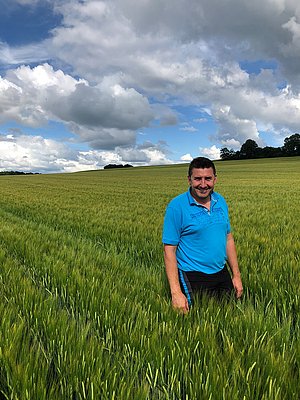
A grand start
Geoffrey Uhl, head of sales at the French HORSCH dealer Nodimat Granday – Groupe Ouvrard witnessed how the topic of no-till farming gained more and more momentum. “We are working in the departments Côte d’Or, Haute-Marne and Aube where clay-limestone soils prevail. Our sales team noticed that the cultivation methods changed: The sales of the HORSCH Sprinter, formerly our topseller, decreased more and more as the Duett coulter fitted to the seed drill moved too much soil. In 2015, the Avatar came at exactly the right time. 2015 and 2016 were the key years when catch crop sowing became more and more accepted. The Avatar SD first was a hit among large farms that were looking for a solution for weed management. Black-grass is a massive problem in our region and low disturbance sowing was an approach to prevent the seeds from germinating. This method soon became more and more popular also among many smaller farms. Today it accounts for the majority of our seed drill turnover.
However, this boom had not been obvious right from the start. The first customers sort of helped to develop the machine further. HORSCH improved the machine every year and then provided the customers with the required parts.“
Since 2012, Vincent Juillet has been working as a HORSCH service technician in the east of France – where the first Avatars were sold. He confirms: “In the first two years we invested a great deal of time to modifiy the machines of the final customers. Various components were developped very quickly, especially the seed element. We modified one customers machine after the other. As soon as the previous update was finished, the new suggestions and experiences of the customer were gathered by R & D and put into practice. The dynamics was very positive. However, it made up the majority of my working hours. The co-operation with the service technicians from France and R & D in Schwandorf was very good and together we excellently handled this difficult situation. And the results are quite impressive. Today,
I do no longer have to look after the Avatar. It is a simple machine that can cope with any conditions. A machine that still works in wet conditions when all the other machines have already given up.“
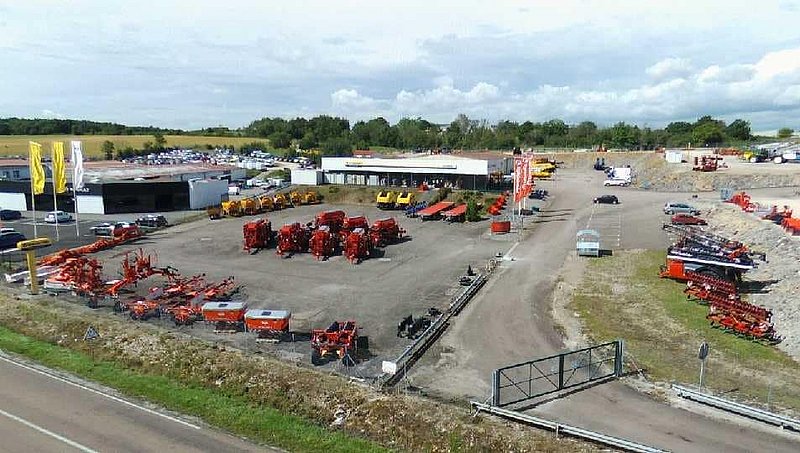
Fabrice Lugnier was one of the first test customers: “My machine was one of the first that were sold in this region and there definitively was still need for development. But the HORSCH France service technicians always were on the spot when there was a problem. Today the machine has already worked 6800 hectares and I am completely satisfied.”
From conservation farming to hybrid methods
For Fabrice Lugnier the Avatar came at exactly the right time: “In 2015 there was no no-till seed drill with this working width. I was already planning on buying a seed drill from the United States.” He had been dealing with conservation farming since 2012 and he was convinced that this would be the long-term solution for his farm for sowing rape, wheat, winter and spring barley. “Due to this technology I work in a future-oriented way and at the same time, I can make optimum use of the quality of my soils.”
With the help of a consultant of the food co-operative Soufflet and the exchange of experiences with other farmers he transferred the method he had tested on small lots to all fields: “It was not a hard conversoin. First of all we concentrated on weed management. We wanted to achieve a lower weed infestation with black-grass before dealing with complex rotations. After that we introduced catch crops. Since then we do no longer have any uncovered soil in winter. We apply fertiliser in a targeted way to reduce passes and to optimise the use of fertiliser. All our crops are sown with 10/18/0/25 between 100 and 200 kg/hectare. And our catch crops get an input of 40 kg sulfan (20 units of nitrogen).“
After the successful conversion Fabrice Lugnier praises the advantages of conservation farming: “Frankly speaking I do not notice a decline in yield compared to no-till farming. I would have to compare the two methods on my farm at the same time. But yield is not the only indicator of success. From an agronomic point of view I only benefit. The soils are clean, we have the exponential growth of black-grass under control. The share of organic matter has risen again, the soils are more bearing and porosity is ideal. In dry conditions the plants suffer less from climatic excesses. Moreover, there is an economic benefit you can really see. If I sow with 6 km/h, diesel consumption is lower – and so is mechanical wear. The mechanical stress is significantly lower. Today we consume 4 litres diesel per hectare, compared to 20 litres before. Despite the low operational speed the performance I achieve with 12 m working width is excellent.”
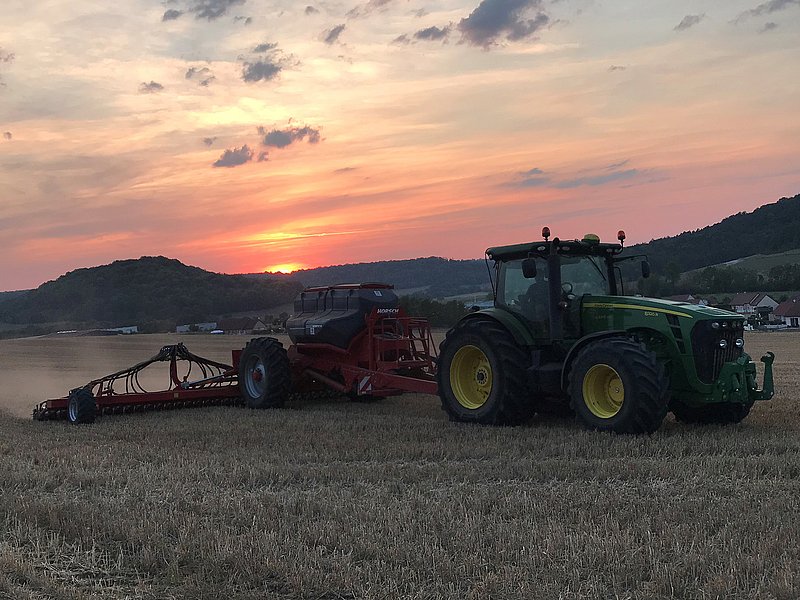
And for the future? Together with his machine co-operative Fabrice Lugnier bought a hoe as the Avatar 12 SD with its tine spacing of 25 cm allows for hoeing some fields – so they don’t have to resort to herbicides again.
According to Fabrice Lugnier there is no one-size-fits-all remedy or the one and only correct way. You take a look at what already exists, but do not adopt it as it is. You have to adapt your methods to the conditions on site and the problems. Thus, the methods of conservation farming can develop and at the same time agricultural practice becomes more and more hybrid. Conservation farming uses methods from organic farming, conventional farming from conservation farming and there surely will appear even more variants…
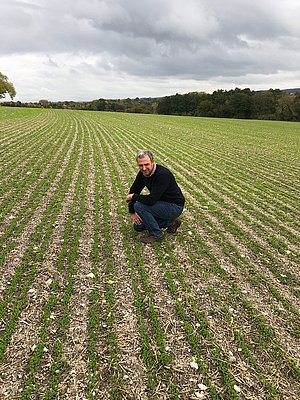
Mathieu Cocagne, a farmer from the department Seine-Maritime in Normandy, is another example of hybridisation and individualisation of the cultivation strategy. In 2018 he bought an Avatar 8 SD and since that time has been following the principles of conservation farming. “I saw it on a friend’s farm who works according to this method. Then I attended several trainings. We went for conservation farming because we have massive problems with black-grass in some lots. 4 to 5 weed control passes in wheat always with a full dose of herbicide didn’t get us anywhere anymore. So we had to cultivate the soil less to prevent the black-grass from emerging in wheat.“ However, Mathieu Cocagne did not want to convert to mere no-till famring. His soils are very heterogeneous: silt, clayey loam, chalk, clay, clay-limestone… and the climate allows for good yields. “For wheat I regularly achive yields between 9 and 10 t/ha. I grow crops which are not necessarily appropriate for no-till farming, e.g. flax fibres and beets.” To get black-grass, voles and slugs under control without compromising his cultivation system, Mathieu Cocagne relies on a superficial tillage and the incorporation of catch crops and companion crops.
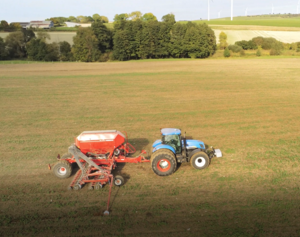
How does he combine the two approaches no-till farming and conservation farming? “For rape for example I spread compost. Our beans are sown with a centrifugal broadcaster. A pass with the Terrano follows to bury the seed at a depth of 5 cm and to mix in organic matter in the first centimetres. With the Terrano we can safely embed the rape and at the same time destroy the mice tunnels. Then I use the triple tank of the Avatar SD to sow 3 kg white clover into the rape, at the same time I apply 100 kg of 18/46. Thus, the compost enriches the soil, the field beans bind nitrogen and create a soil structure. The white clover serves as a cover after the rape harvest until wheat is sown to suppress pests, to create soil structure and to provide nitrogen for the wheat.
When the rotation is wheat after wheat the plant cover has further functions: cleaning of the lot, nitrogen fixation and restructuring of the soil. With this combination the soil is cultivated least and I sow wheat directly into the plant cover.“
For flax, however, tillage is essential. The crop is sown in spring and needs a warmed up soil. “In this case, no-till would slow down emergence, especially as our climate is rather wet and the sun radiation is not very high. And I do not want to put such an important crop at risk.“ The Avatar SD, which can be used for no-till farming as well as for sowing into catch crops, is optimum for this method. “I can quite simply use it to also drive in cultivated soils.“
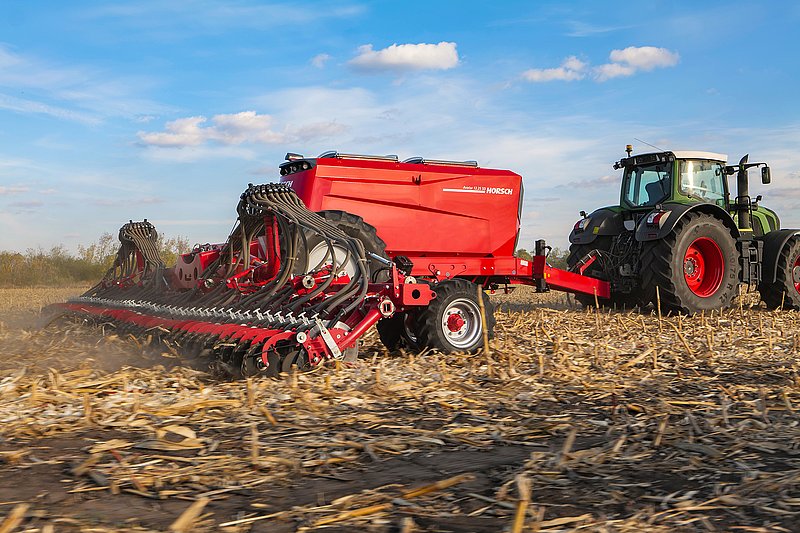
There are several tyre versions from 520 mm over 580 mm, 710 mm and 900 mm wide tyres to twin tyres – depending on the max.admissible transport width.
Electronics is based on a new control concept. The user interface has been optimised for Touch Terminals and the display can be customised. Modern standards like SectionControl, VariableRate and working according to application maps are standard equipment and can be used after having been activated correspondingly.
Options like a 6 mm wide disc blade and various carbide options at the skid extend the service life.
After 25 years of no-till farming and then 4 years of catch crop sowing Mathieu Cocagne got the infestation under control. “It is not yet perfect, but we have some clean fields that are completely free from grass weeds.”
Mathieu Cocagne can only confirm the advantages Fabrice Lugnier specified: After 1800 hectare no part has to be replaced. Wear is low, so are the diesel costs. “The seed drill and the system I went for in 2018 are optimum for my farm and so far I did not have to change anything. However, I would like to improve some small details. At the moment everything works as in our region harvest usually takes place early, i.e. at the end of July, and the catch crops had enough time to build up biomass and develop a root system. What happens if the harvest is postponed to the 15th of August? So we have to try to adapt the catch crops depending on the rainfall and the sowing date.
In total, the Avatar SD is an excellent machine. Only sowing flax very shallowly is a little bit more difficult. We had to use a trick and lift the machine a little bit higher. The angle of the closing wheel could perhaps be slightly larger to better close the seed furrow in wet conditions. But I am confident that R & D will find a solution for this!”
Further developments for practical use
And they did. In the meantime, HORSCH has already presented the new Avatar 12 SD. Fabrice Lugnier was one of the first customers who tested the machine in the field.
“A lot of things have not changed at all: the general functioning, the 25 cm coulter spacing, the triple tank system, the switching off via GPS. It is the same machine. The design is identical to its predecessor and I use it in the same conditions with the same objectives.
In total the machine has been simplified considerably. The axle is no longer telescopic. This, of course, facilitates maintenance and reduces wear.
The seed element, too, has been developed further. The new seed coulter with carbide coating extends the range of use even in difficult conditions. The feeler wheel and the bearings of the closing wheel are more solid. The simpler design makes the machine much more durable.
Further improvements additionally increase efficiency. The new pneumatics allows for an increased output. With the new user interface blockage detection, too, was improved. Handling has become more intuitive and saves time. Sowing density and depth can be adjusted more quickly. It takes me about 5 minutes max. to adjust the depth of my 12 m machine. And, of course, the larger hopper capacity increases the range in the field.
Moreover, we can now mount larger tyres to reduce compactions in the field when sowing. And the machine is more stable when driving on the road.“
Summary
Conservation farming today catches the spirit of the time in the whole of Europe. Everywhere farms are appreciated as “Farm Labs”, as open-air laboratories. If you want to summarise conservating farming in a few words, the statement of Frédéric Thomas, founder of the magazine TCS, probably fits best: “I prefer to take risks I choose myself instead of waiting that these risks stab me in the back and I am not prepared.”
And conservation farming holds another trump card for the future! The fertiliser price rises as well as the energy price and when the dossier about carbon storage comes into effect it will have an impact on knowledge transfer. The Avatar SD meets the requirements of the farmers and is continuously developed further to solve the challenges of the time.
Right from the beginning HORSCH’s focus was on the functional improvement of the machine. With regard to the seed element it is important that a lot of experiences are included to make sure it works well in the most different conditions. The development is more complex than for a conventional element. As the machine is used all over the world, the seed element was exposed to the most different conditions and was pushed to its limits. The international experiences were immensely useful and the machine is becoming more and more popular in Russia, in the Ukraine, in the Baltic Staes and in Australia. The focus is on the simplification of the machine and the extension of the range to meet the requirements of an even larger clientele.
Read more about The beginnings of conservation farming in France.
What are the excelling features of the new Avatar?
The Avatar 12.25 SD can be used with a 240 to 250 hp tractor. There are several reasons for this low horsepower requirement:
- Low empty weight
- Wide tyres at the seed wagon as an option
- Twin tyres at the wings of the machine
- SingleDisc seed coulters move little soil
The new hopper generation combines the following advantages:
- Double hopper with a capacity of 6500 l (60/40)
- MiniDrill with a capacity of 400 l as an option
- Fan is mounted at a very high position in the hopper to reduce the dust that is sucked in and to extend the service life of the components
- Large, clearly arranged toolbox